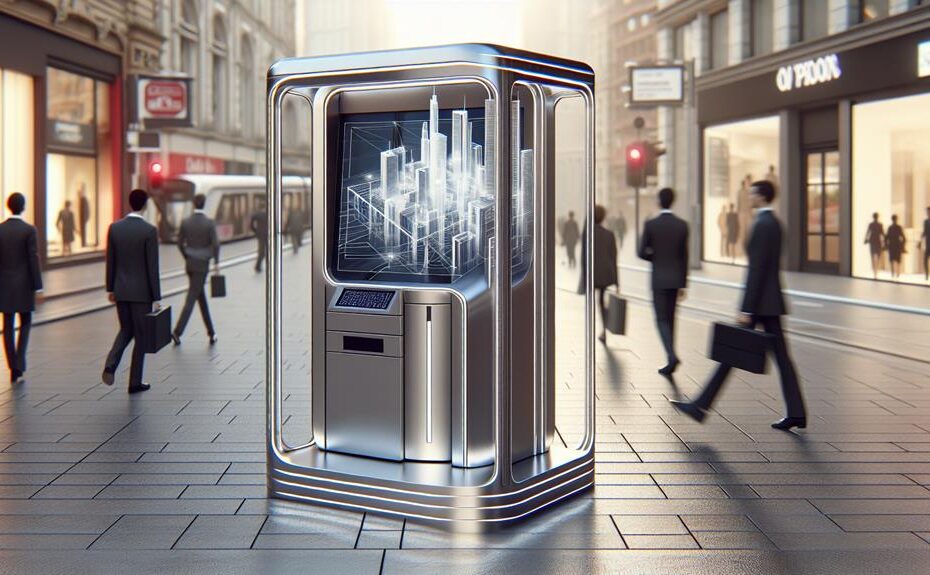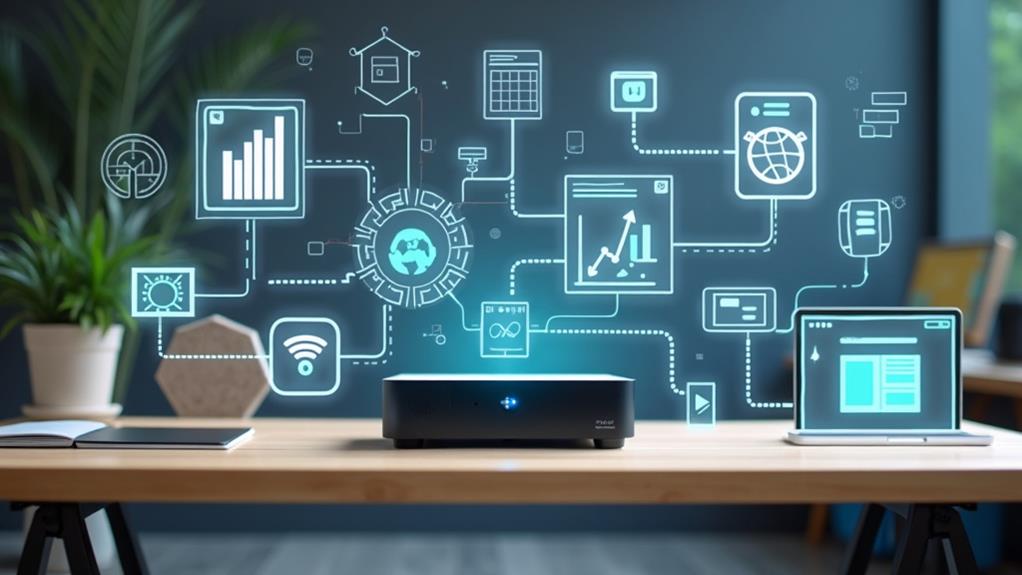



Optimizing a mini PC for kiosk applications involves a blend of fine-tuning and strategic planning. The key to accessing peak performance lies in configuring power settings that minimize energy consumption without sacrificing functionality. By adjusting the power plan to Balanced mode and strategically managing sleep and hibernate settings, you can guarantee that your kiosk hums along efficiently. But that's just the beginning – stay with us to discover the rest of the essential steps to transform your mini PC into a robust and reliable kiosk solution.
Key Takeaways
Optimizing Mini PC for Kiosk Applications
- Configure power settings to balanced mode and optimize sleep and hibernate settings.
- Use solid-state drives with sufficient storage capacity and implement write-caching and wear-leveling.
- Choose rugged, fanless, and weatherproof kiosk hardware with custom ports.
- Remotely manage the kiosk by monitoring system health, updating software, and troubleshooting issues.
- Ensure security by locking to a single application, performing regular updates, and scheduling compliance checks.
Optimizing Power Settings for Kiosks
To guarantee your mini PC remains functional and efficient as a kiosk, you need to carefully configure the power settings to achieve the right balance between performance and energy consumption. By optimizing power settings, you can ascertain that your kiosk runs smoothly while conserving energy and prolonging battery life.
First, you should configure your power plan to Balanced mode to optimize performance and energy efficiency. Avoid using the High Performance power plan unless absolutely necessary, as it can drastically increase power consumption. Next, adjust sleep and hibernate settings based on the kiosk's usage patterns to avoid downtime and prolong battery life. Additionally, enable power-saving features such as display timeout and hard drive spin-down to reduce energy consumption.
Customize power settings to suit the specific requirements of your kiosk deployment, balancing performance, reliability, and energy efficiency. By doing so, you can ensure that your kiosk operates effectively and with minimal energy waste.
Customizing Storage for Kiosk Apps
Customize your storage setup for your kiosk apps by opting for solid-state drives (SSDs) over traditional hard disk drives (HDDs), which provide faster boot times and higher reliability for your kiosk applications. Choose an SSD with sufficient storage capacity to accommodate the operating system, kiosk software, and necessary media files or databases. Advanced storage management techniques, such as write-caching and wear-leveling, can extend the SSD's lifespan and minimize the risk of premature failure. To safeguard system stability, consider implementing a read-only file system or writing-protecting the storage partition to prevent unauthorized modifications. Additionally, you can leverage a RAM disk or ramdisk to store temporary files and cache data, reducing wear on the SSD and improving overall system responsiveness.
Configuring Kiosk Hardware
When configuring kiosk hardware, employ an all-in-one touchscreen desktop PC or a rugged, fanless, and weatherproof Lenovo Mini PC with a touchscreen display to warrant a reliable and efficient kiosk experience. This setup guarantees that your kiosk installation is protected from environmental factors and provides users with an intuitive, seamless interaction.
- Choose a Suitable Enclosure: Select a design that is weatherproof, dust-resistant, and secure to safeguard the internal components.
- Integrate Essential Features: Include payment processing capabilities like credit card readers and thermal printers for secure transactions.
- Connectivity Options: Ensure the kiosk hardware supports both wired Ethernet and wireless connections for remote management and data transfer.
- Customize Ports: Make sure the kiosk hardware can be customized to meet specific port requirements, such as COM, LAN, and display ports.
- Reasonable Cost: Optimize the cost by selecting the appropriate hardware that balances functionality with budget constraints.
Ensuring Security for Kiosk Deployment
As all-in-one kiosk deployments increase, you must secure your installations by implementing robust security measures that prevent unauthorized access and guarantee continuous monitoring and updating of applications. To safeguard this, lock your mini PCs to a single business application to prevent misuse and potential security breaches. Regular remote updates not only maintain ideal performance but also ensure that vulnerabilities are addressed quickly.
In addition to software security, track battery usage and other context-aware data to monitor and optimize kiosk health. Schedule periodic compliance checks and device reboots to maintain exemplary performance and address any issues before they cause downtime.
If issues arise, remotely cast devices to troubleshoot and enhance overall kiosk management. This safeguards that troubleshooting and maintenance can be performed efficiently, minimizing downtime and keeping your kiosks, especially those handling sensitive data like credit card transactions, secure and operational.
Remotely Managing Kiosk Performance
To optimize your kiosk's performance, update your software regularly and utilize remote management capabilities for real-time monitoring. This allows you to identify and address issues promptly, ensuring your Interactive Kiosks remain operational and efficient. Remote management enables you to:
- Monitor system health: Track CPU usage, memory, and storage to detect potential bottlenecks.
- Update software remotely: Push updates and patches to multiple kiosks simultaneously, reducing downtime and maintenance costs.
- Troubleshoot issues: Access kiosk logs and perform remote diagnostics to quickly identify and resolve problems.
- Configure settings: Remotely adjust settings, such as display brightness, volume, and network connections, to optimize performance.
- Receive alerts: Set up notifications for critical system events, ensuring you're informed of any issues that require attention.
Frequently Asked Questions
How to Set up a Computer in Kiosk Mode?
To set up a computer in kiosk mode, create a standard user account, then configure Assigned Access through the Settings app. Use kiosk software recommendations, such as Mobile Device Manager Plus or Scalefusion, to manage settings and apps.
Does Windows 10 Have Kiosk Mode?
As you set up a Windows 10 kiosk, you uncover a tailored operating system, allowing you to navigate between single-app and multi-app configurations tailored for kiosk deployments.
Does Windows 11 Have Kiosk Mode?
Yes, Windows 11 has kiosk mode, which lets you configure devices to run single or multiple apps in a locked-down environment. This feature supports auto-logon and limits user access to enhance security and control kiosk functionality.
Are Mini-Pc Good for Everyday Use?
For everyday use, mini PCs are great; consider battery life and overall performance. With efficient processors and ample storage, they handle tasks well.
Conclusion
You've optimized your mini PC for kiosk applications by making key adjustments. You've configured the power plan for efficiency, selected a robust SSD, and guaranteed durability with write-protecting storage. Additionally, you've secured the enclosure and provided network connectivity options. With these steps, your kiosk is primed to provide an interactive experience while minimizing energy consumption and guaranteeing reliable performance.
Disclosure: As an Amazon Associate, I earn from qualifying purchases.




